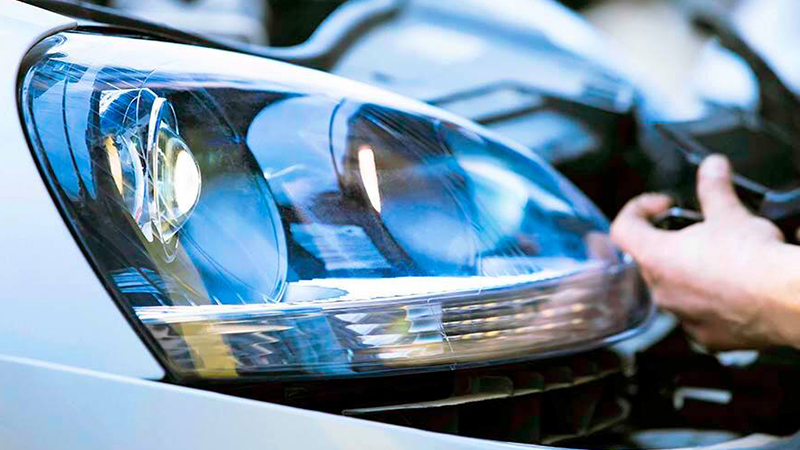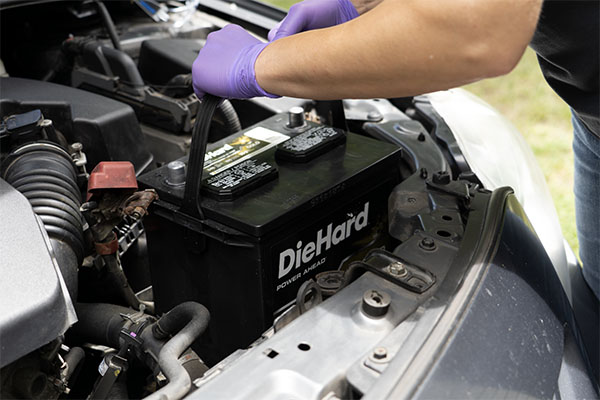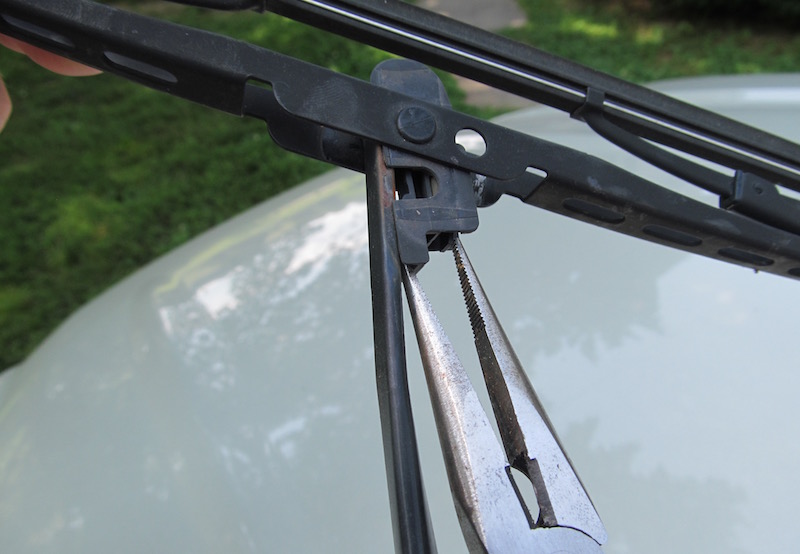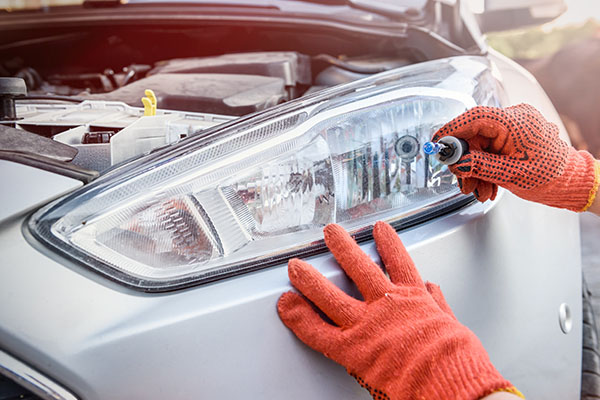Headlights are one of those essentials that you don't think about until they're gone...or fading fast. When the road ahead becomes unclear, you can have more questions than answers. So, we'll take a look at what you need to know when it comes to replacing your headlight bulbs.
Why you should replace headlights
There's the obvious fact: dimming or burned out headlight bulbs mean you can't see the road and other drivers can't see you. It's a recipe for danger. It can mean a costly ticket from your local authorities if you don't get them fixed. Besides, there are plenty of options for improved visibility these days. Even changing out your old halogen headlights for newer models can provide 30 percent brighter light and up to 25 percent more down-road visibility. So why tolerate yellow, inadequate, or uneven lighting?
When to replace your headlights
Don’t wait until your bulbs are burned out, which is not only unsafe but also places you at risk for being pulled over. If you notice your bulbs are dim or flickering, it’s time to replace them. And, as a rule of thumb, if one bulb’s gone or fading, the other won’t be far behind. So replace both bulbs at the same time. For many vehicles these days, one bulb serves for both high and low beams. In older models, however, two separate headlight bulbs were used on both sides. Either replace both bulbs or all four bulbs at the same time for a consistent field-of-vision down-road. Consult your owner's manual for the specific needs for your vehicle.
Replace both headlights at the same time for improved visibility. It's also important to note when one headlight bulb fails, the other usually isn't far behind.
What kinds of headlights are there?
Vehicles come standard with a specific type of headlight. Common types include halogen, Xenon (or HID), and LED on select new vehicles. Most vehicles come with halogen headlights, though. Here are some key differences between them:
- Halogen: Halogen headlights use a tungsten-halogen filament mixed with halogen gas to generate a much brighter light than conventional headlights.
- Xenon/HID: Xenon is one type of HID (high intensity discharge) bulb. Instead of using a heated filament, Xenon headlights use gas. Xenon lights are brighter, have a lower operating temperature, and last longer. Also keep in mind that HID bulbs can be a bit pricier and professional installation may be recommended.
- LED: LEDs (light emitting diodes) have an advantage over halogen in that they draw less power to operate, run cooler than halogen lights, and last longer. If your newer vehicle came equipped with LED headlights from the factory, you’re probably not even reading this article.
How do I know which type of headlights are right for my vehicle?
Halogen light bulbs come standard on most vehicles, but increasingly carmakers are turning to other technologies like Xenon bulbs for improved visibility. Consult your owner's manual for the specific type of replacement bulbs you can use for your vehicle. Then select the bulbs that will give you the best visibility and value for your needs.
You can also consider upgrading your headlights to Xenon if they don't come standard on your vehicle. Xenon lights have a distinctive white or bluish-white glow and are regarded as the ultimate in visibility and luxury. You’ll need to install a Xenon conversion kit, however, which will take a few hours and several hundred dollars. The bulbs themselves cost quite a bit more, as well. But the difference in illumination can be dramatic.
Remember to add your vehicle when shopping with Advance to see a selection of bulbs that are right for you.
Are all halogen headlights alike?
No. Halogen lights can emit either white or blue beams. Generally speaking, the whiter the beam, the brighter the light. An increase in brightness improves night-driving vision and helps other drivers see you better. Headlights with a whiter color temperature emit a beam that more closely resembles natural light. Besides brightness, increased whiteness has also been shown to improve driver visibility — and your visibility to other drivers.
How to tell which type of headlight configuration you have
There are two primary configurations of headlights: sealed beams and capsules.
Sealed Beams:
- Common on cars 10 years old and older
- Mount directly to the front of the car
- Seldom used today except on some large trucks and SUVs
Capsules:
- Common on most newer cars
- Plug into the car’s headlight socket assembly
- Relatively simple to replace
How to change headlights
Changing out your headlight bulbs is easier than it looks, so why leave it up to a mechanic? You'll likely get a better quality product than the standard bulbs used by a shop and save money on labor, too.
Read our step-by-step guides on how to change headlights and how to aim and adjust headlights to get started. Even if you aren't interested in changing out the headlights yourself, you'll still get a better value if you purchase the bulbs and ask you mechanic to install them for you.
What to do when replacing your headlights isn't enough
If your headlight lenses are cloudy or dirty, the fanciest headlight bulbs in the world won't make a difference. You'll need to remove the film and grime on your lenses that occurs naturally over time. You can use a headlight restoration kit or a few tried-and-true home remedies. Either way, cleaning your headlights shouldn't take more than an hour or two and could save you from hazardous nighttime driving. Changing out your headlights is an easy and inexpensive way to ensure a safer driving experience.
Have you changed or adjusted your own headlights lately? Have you tried upgrading to LED or Xenon bulbs? Share your advice.
Watch Chris Fix's Headlight Restoration Video:








